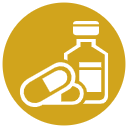Witnessing or experiencing a traumatic event can be very difficult. It can greatly affect your mental and emotional state. Feelings of intense sadness, anxiety, and fear can last for several days after the event.
For many people, these feelings will subside but sometimes they can last for a long time. This is PTSD, or Post-Traumatic Stress Disorder. Without PTSD treatment, these feelings can become worse over time.
About 15 million American adults experience PTSD every year. PTSD is different for everyone but women are more likely to suffer from it. About 8% of women receive a PTSD diagnosis compared to 4% of men.
If you, or someone you know, are facing this condition, you may be looking for answers. What is PTSD? What causes it? How to deal with PTSD? Keep reading to find all the answers to these common questions about PTSD.
Post-traumatic Stress Disorder, or PTSD as it’s commonly known, occurs after trauma. You may have been directly involved in the traumatic incident or witnessed it as an outsider.
Some people may even experience PTSD after a traumatic event happens to a loved one. PTSD can also occur in careers where traumatic incidents are common, such as with first responders.
Some examples of common traumatic incidents include:
Overall, women are more likely to experience abuse-related PTSD. This can include sexual assault or domestic violence. Men are more likely to experience an accident or violence-related PTSD. For example, trauma due to war or an accident.
PTSD often begins in childhood or adolescence. Over 60% of children report experiencing a traumatic incident before the age of 16. Abuse is the most common form of trauma for children. But other incidents such as neglect, bullying, and loss of a loved one are also prevalent.
PTSD does not consist of types, but of five sub-categories:
Additionally, Complex PTSD can occur but it is not currently part of the DSM-5. The DSM-5, or Diagnostic and Statistic Manual of Mental Disorders, is used to diagnose PTSD.
Complex PTSD occurs when many trauma incidents happen over a longer period. It can be more difficult and PTSD recovery may take longer.
This type of PTSD occurs after trauma but unlike the normal stress response, it does not subside. Symptoms last for long periods and begin within one month of the incident. CBT, or Cognitive Behavioral Therapy, is often used as a treatment.
This sub-category is described as symptoms of PTSD, without any coexisting disorder. Disorders such as depression or anxiety often coexist with PTSD. Since people with this type do not have comorbidities, they have a very high chance of PTSD recovery.
Dissociative PTSD centers around dissociation and detachment. This can include feeling detached from your body or environment. People who experience this can often feel like life isn’t real.
This sub-category of PTSD usually involves flashbacks to the traumatic event. Feelings and symptoms can also be more intense than other sub-categories.
The causes of PTSD vary but the key feature is that the stress response does not disappear. When exposed to stress, our bodies go into fight or flight mode. This means we either tackle the problem or remove ourselves from the situation.
Usually, our body is pretty good at assessing the situation and letting go of the stress response. That’s why when you experience something like a car accident, your stress response will eventually disappear.
People who experience PTSD remain in that fight or flight mode. The body is under constant stress, usually reliving the traumatic event. If the stress is not managed correctly, it can evolve into PTSD.
Every person experiences symptoms of PTSD in a different way. Some may have more intense symptoms, while others may feel less.
But there are some common symptoms that almost everyone with PTSD will experience. They may experience one or all of these symptoms.
After a traumatic event, small things can become big triggers. People with PTSD will often avoid activities, people, or locations that trigger them.
If someone experiences a traumatic car accident, for example, they may develop avoidance. They might fear driving or loud noises. They may also avoid the location of their accident.
Often, the fight or flight response will keep the body in a state of elevated anxiety. This makes it difficult to concentrate, fall asleep, or relax.
A person who experiences a violent assault in public may feel fearful of crowds. They might feel fearful of going out in public or even talking to people.
Negative emotions such as anger, sadness, or disgust are common symptoms. People may even feel guilty for witnessing or being involved in the event.
For example, the death of a loved one after a traumatic accident such as a car crash can trigger feelings of guilt. The survivor may question why it happened. They may feel guilty that they are alive while their loved one isn’t.
Flashbacks, or reliving memories, after trauma are very common in PTSD. Oftentimes, a trigger will bring on an unpleasant memory and a flashback will occur.
Many people re-live the experience through dreams or nightmares. For example, someone who experienced a horrific fire may dream about fire and heat. Or the flashback can occur whenever they smell smoke.
Treatment often focuses on “trauma-specific” or “trauma-informed care”. While they may sound similar, they have several differences. Trauma-specific care focuses on targeting the effects of the trauma. At its core, trauma-specific care aims to achieve healing. This can be done through several types of therapies.

Cognitive Processing Therapy focuses on changing the patient’s way of seeing a situation. It addresses negative thoughts and ideas related to the traumatic incident.

Prolonged exposure therapy is a common method for overcoming trauma. This type of therapy focuses on facing your trauma and moving away from avoidance. While this can be effective, it may also re-traumatize the patient.

Trauma-informed care is a more gentle approach that seeks to avoid re-traumatization. Instead, the focus is more on developing skills and habits to lessen the effects of the trauma.
Both types of treatment options can include medicine. In fact, most people with PTSD follow a treatment plan that includes both therapy and medicine. Medicine is usually prescribed to manage stress levels and emotional well-being.
These medicines may be SSRIs and/or SNRIs. Some people include both in their treatment plan, while others only need one.

SSRIs are selective serotonin reuptake inhibitors. While the name may sound intimidating, these are simply anti-depressants. They are used to regulate mood, which can help people with PTSD reduce negative emotions.

SNRIs are serotonin-norepinephrine reuptake inhibitors. Another long and scary name, but this medicine is also an anti-depressant. Although it can also be used for anxiety and sleep disorders as well.
While it’s impossible to guarantee the prevention of PTSD, there are ways to lower the chances. Here are a few ways to manage stress after a traumatic event:
Dealing with Post-traumatic Stress Disorder can be difficult. But armed with the right information, support, and PTSD treatment, it’s possible!
New Method Wellness is a premier dual diagnosis treatment center dually accredited by The Joint Commission. It has been singled out as one of the best treatment centers in America, offering a unique 3:1 staff-to-client ratio that pairs every client with two therapists instead of one.
At New Method Wellness, we add another dimension to dual diagnosis treatment, and that is the integration of holistic therapy, such as massage/acupuncture therapy, equine therapy, and art therapy. As addiction therapists and substance abuse counselors work with clients to treat behavioral health diagnoses, holistic therapy adds meaning to life after treatment and sustains long-term recovery. Our 3:1 staff-to-client ratio ensures client success after treatment, as evidenced by our Extended Aftercare program.
If you experienced or saw a traumatic event, you may suspect you have PTSD. We recommend visiting a PTSD treatment center to discuss your symptoms. The first step to healing is reaching out for help.
To receive more information about trauma-informed care for PTSD, please contact us today.
Deanna Crosby is a Licensed Marriage and Family Therapist (LMFT) with over 20 years of experience working with clients in recovery. Her expertise has catapulted her into the spotlight. Featured on several episodes of the Dr. Phil Show as a behavioral health expert, DeAnna is a routine contributor for NBC News, The Huffington Post, Elle Magazine, MSN, Fox News, Yahoo, Glamour, Today, and several other prominent media outlets.
After receiving her bachelor’s degree from the University of California in Irvine, Crosby did postgraduate work at Centaur University where she graduated at the top of her class with a CAADAC certification in Centaur’s chemical dependency program. Following her time at Centaur, Crosby received her Master of Counseling Psychology degree from Pacifica Graduate Institute, where she also attained a Doctoral Degree in Depth Psychology.
Accredited by:
New Method Wellness
We firmly believe that the internet should be available and accessible to anyone, and are committed to providing a website that is accessible to the widest possible audience, regardless of circumstance and ability.
To fulfill this, we aim to adhere as strictly as possible to the World Wide Web Consortium’s (W3C) Web Content Accessibility Guidelines 2.1 (WCAG 2.1) at the AA level. These guidelines explain how to make web content accessible to people with a wide array of disabilities. Complying with those guidelines helps us ensure that the website is accessible to all people: blind people, people with motor impairments, visual impairment, cognitive disabilities, and more.
This website utilizes various technologies that are meant to make it as accessible as possible at all times. We utilize an accessibility interface that allows persons with specific disabilities to adjust the website’s UI (user interface) and design it to their personal needs.
Additionally, the website utilizes an AI-based application that runs in the background and optimizes its accessibility level constantly. This application remediates the website’s HTML, adapts Its functionality and behavior for screen-readers used by the blind users, and for keyboard functions used by individuals with motor impairments.
If you’ve found a malfunction or have ideas for improvement, we’ll be happy to hear from you. You can reach out to the website’s operators by using the following email juanita@newmethodwellness.com
Our website implements the ARIA attributes (Accessible Rich Internet Applications) technique, alongside various different behavioral changes, to ensure blind users visiting with screen-readers are able to read, comprehend, and enjoy the website’s functions. As soon as a user with a screen-reader enters your site, they immediately receive a prompt to enter the Screen-Reader Profile so they can browse and operate your site effectively. Here’s how our website covers some of the most important screen-reader requirements, alongside console screenshots of code examples:
Screen-reader optimization: we run a background process that learns the website’s components from top to bottom, to ensure ongoing compliance even when updating the website. In this process, we provide screen-readers with meaningful data using the ARIA set of attributes. For example, we provide accurate form labels; descriptions for actionable icons (social media icons, search icons, cart icons, etc.); validation guidance for form inputs; element roles such as buttons, menus, modal dialogues (popups), and others. Additionally, the background process scans all of the website’s images and provides an accurate and meaningful image-object-recognition-based description as an ALT (alternate text) tag for images that are not described. It will also extract texts that are embedded within the image, using an OCR (optical character recognition) technology. To turn on screen-reader adjustments at any time, users need only to press the Alt+1 keyboard combination. Screen-reader users also get automatic announcements to turn the Screen-reader mode on as soon as they enter the website.
These adjustments are compatible with all popular screen readers, including JAWS and NVDA.
Keyboard navigation optimization: The background process also adjusts the website’s HTML, and adds various behaviors using JavaScript code to make the website operable by the keyboard. This includes the ability to navigate the website using the Tab and Shift+Tab keys, operate dropdowns with the arrow keys, close them with Esc, trigger buttons and links using the Enter key, navigate between radio and checkbox elements using the arrow keys, and fill them in with the Spacebar or Enter key.Additionally, keyboard users will find quick-navigation and content-skip menus, available at any time by clicking Alt+1, or as the first elements of the site while navigating with the keyboard. The background process also handles triggered popups by moving the keyboard focus towards them as soon as they appear, and not allow the focus drift outside of it.
Users can also use shortcuts such as “M” (menus), “H” (headings), “F” (forms), “B” (buttons), and “G” (graphics) to jump to specific elements.
We aim to support the widest array of browsers and assistive technologies as possible, so our users can choose the best fitting tools for them, with as few limitations as possible. Therefore, we have worked very hard to be able to support all major systems that comprise over 95% of the user market share including Google Chrome, Mozilla Firefox, Apple Safari, Opera and Microsoft Edge, JAWS and NVDA (screen readers), both for Windows and for MAC users.
Despite our very best efforts to allow anybody to adjust the website to their needs, there may still be pages or sections that are not fully accessible, are in the process of becoming accessible, or are lacking an adequate technological solution to make them accessible. Still, we are continually improving our accessibility, adding, updating and improving its options and features, and developing and adopting new technologies. All this is meant to reach the optimal level of accessibility, following technological advancements. For any assistance, please reach out to juanita@newmethodwellness.com